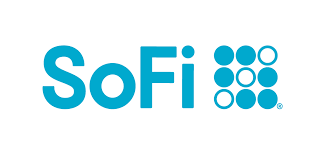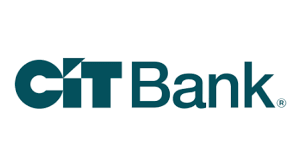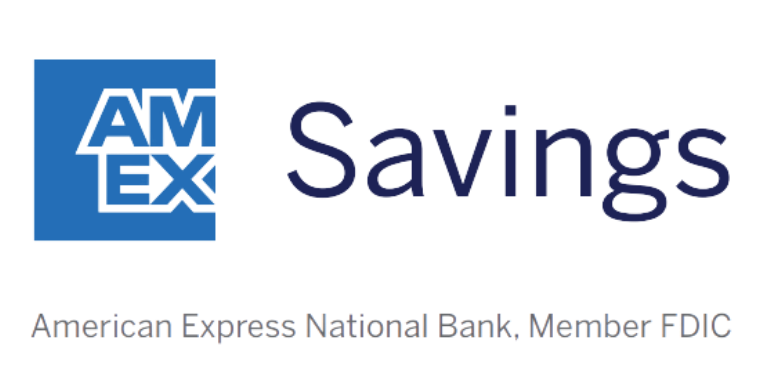I get it, online banks can feel a little intimidating at first. How do you access your money when you need it fast? Where does your money actually go? And, the big one: is it safe?
When I opened my first online-only account back in 2022, I had the same questions. Turns out, I wasn't alone -- 91% of people in our Motley Fool Money Online Banking Trends survey said that digital banking was just as important as security, fraud protection, and quality customer service when choosing where to bank.
Here's the good news: online banks are just as safe as traditional ones. Plus, they often come with higher rates and lower fees. Intrigued? Allow me to explain.
What makes online banks different from traditional banks?
At the core, online banks and traditional banks are pretty similar, but the big difference is that online banks operate entirely online. There are no physical branches or in-person customer service (you'll need to rely on phone, chat, or email support instead).
This lack of physical overhead -- no branches to maintain or tellers to pay -- lets online banks offer better savings rates and lower fees. For me, that's a huge win.
And here's something that might surprise you: both online and traditional banks are backed by major financial institutions or insured by the FDIC. This means your deposits are protected, just like they would be at a brick-and-mortar bank.
Compare savings rates
Make sure you're getting the best account for you by comparing savings rates and promotions. Here are some of our favorite high-yield savings accounts to consider.
| Account | APY | Promotion | Next Steps |
|---|---|---|---|

Open Account for SoFi Checking and Savings
On SoFi's Secure Website.
Rating image, 4.50 out of 5 stars.
4.50/5
Our ratings are based on a 5 star scale.
5 stars equals Best.
4 stars equals Excellent.
3 stars equals Good.
2 stars equals Fair.
1 star equals Poor.
We want your money to work harder for you. Which is why our ratings are biased toward offers that deliver versatility while cutting out-of-pocket costs.
|
up to 3.80%²
Rate info
You can earn the maximum APY by having Direct Deposit (no minimum amount required) or by making $5,000 or more in Qualifying Deposits every 30 days. See SoFi Checking and Savings rate sheet at: https://www.sofi.com/legal/banking-rate-sheet.
Min. to earn: $0
|
New customers can earn up to a $300 bonus with qualifying direct deposits!¹
|
Open Account for SoFi Checking and Savings
On SoFi's Secure Website. |

Open Account for CIT Platinum Savings
On CIT's Secure Website.
Rating image, 4.50 out of 5 stars.
4.50/5
Our ratings are based on a 5 star scale.
5 stars equals Best.
4 stars equals Excellent.
3 stars equals Good.
2 stars equals Fair.
1 star equals Poor.
We want your money to work harder for you. Which is why our ratings are biased toward offers that deliver versatility while cutting out-of-pocket costs.
|
4.10% APY for balances of $5,000 or more
Rate info
4.10% APY for balances of $5,000 or more; otherwise, 0.25% APY
Min. to earn: $100 to open account, $5,000+ for max APY
|
Earn a bonus of at least $225 after a one-time deposit of $25,000+.
Transfer a one-time deposit of $25,000-$49,999.99 for a bonus of $225. Transfer a one-time deposit of $50,000+ for a bonus of $300. Account must be opened with code PS2025 while this promotion lasts, and funded within 30 days. Bonus will be fulfilled within 60 days from the funding date. There is no period of time where the customer will be required to maintain the funds. Account must be open when bonus is credited. One bonus per account and primary customer. Bonus will be credited into the Platinum Savings Account that fulfills the funding requirement. Funding can be deposited all at once or incrementally.
|
Open Account for CIT Platinum Savings
On CIT's Secure Website. |

Open Account for American Express® High Yield Savings
On American Express's Secure Website.
Rating image, 4.00 out of 5 stars.
4.00/5
Our ratings are based on a 5 star scale.
5 stars equals Best.
4 stars equals Excellent.
3 stars equals Good.
2 stars equals Fair.
1 star equals Poor.
We want your money to work harder for you. Which is why our ratings are biased toward offers that deliver versatility while cutting out-of-pocket costs.
|
3.70%
Rate info
3.70% annual percentage yield as of April 17, 2025. Terms apply.
Min. to earn: $0
|
N/A
|
Open Account for American Express® High Yield Savings
On American Express's Secure Website. |
SoFi disclosure:
¹ New and existing Checking and Savings members who have not previously enrolled in Direct Deposit with SoFi are eligible to earn a cash bonus of either $50 (with at least $1,000 total Direct Deposits received during the Direct Deposit Bonus Period) OR $300 (with at least $5,000 total Direct Deposits received during the Direct Deposit Bonus Period). Cash bonus will be based on the total amount of Direct Deposit. Direct Deposit Promotion begins on 12/7/2023 and will be available through 1/31/26. See full bonus and annual percentage yield (APY) terms at sofi.com/banking#1.
² SoFi members who enroll in SoFi Plus with Direct Deposit or by paying the SoFi Plus Subscription Fee every 30 days or with $5,000 or more in Qualifying Deposits during the 30-Day Evaluation Period can earn 3.80% annual percentage yield (APY) on savings balances (including Vaults) and 0.50% APY on checking balances. There is no minimum Direct Deposit amount required to qualify for the stated interest rate. Members without either SoFi Plus or Qualifying Deposits, during the 30-Day Evaluation Period will earn 1.00% APY on savings balances (including Vaults) and 0.50% APY on checking balances. Only SoFi Plus members are eligible for other SoFi Plus benefits. Interest rates are variable and subject to change at any time. These rates are current as of 1/24/25. There is no minimum balance requirement. Additional information can be found at http://www.sofi.com/legal/banking-rate-sheet. See the SoFi Plus Terms and Conditions at https://www.sofi.com/terms-of-use/#plus.
³ We do not charge any account, service or maintenance fees for SoFi Checking and Savings. We do charge a transaction fee to process each outgoing wire transfer. SoFi does not charge a fee for incoming wire transfers, however the sending bank may charge a fee. Our fee policy is subject to change at any time. See the SoFi Checking & Savings Fee Sheet for details at sofi.com/legal/banking-fees/.
⁴ SoFi Bank is a member FDIC and does not provide more than $250,000 of FDIC insurance per depositor per legal category of account ownership, as described in the FDIC’s regulations.
Any additional FDIC insurance is provided by the SoFi Insured Deposit Program. Deposits may be insured up to $3M through participation in the program. See full terms at SoFi.com/banking/fdic/sidpterms. See list of participating banks at SoFi.com/banking/fdic/participatingbanks.
⁵ We’ve partnered with Allpoint to provide you with ATM access at any of the 55,000+ ATMs within the Allpoint network. You will not be charged a fee when using an in-network ATM, however, third-party fees incurred when using out-of-network ATMs are not subject to reimbursement. SoFi’s ATM policies are subject to change at our discretion at any time.
⁶ Early access to direct deposit funds is based on the timing in which we receive notice of impending payment from the Federal Reserve, which is typically up to two days before the scheduled payment date, but may vary.
⁷ Overdraft Coverage is limited to $50 on debit card purchases only and is an account benefit available to customers with direct deposits of $1,000 or more during the current 30-day Evaluation Period as determined by SoFi Bank, N.A. The 30-Day Evaluation Period refers to the “Start Date” and “End Date” set forth on the APY Details page of your account, which comprises a period of 30 calendar days (the“30-Day Evaluation Period”). You can access the APY Details page at any time by logging into your SoFi account on the SoFi mobile app or SoFi website and selecting either (i) Banking > Savings > Current APY or (ii) Banking > Checking > Current APY. Members with a prior history of non-repayment of negative balances are ineligible for Overdraft Coverage.
How do online banks keep your money safe?
I was definitely nervous about keeping my money with an online bank at first, but I was relieved to learn that they take several steps to keep your money safe. Here's how:
- FDIC insurance: Just like traditional banks, most online banks are insured by the FDIC. This means your deposits are covered up to $250,000 per depositor if the bank were to fail. So, your money is just as protected as it would be at any other bank.
- Encryption and cybersecurity: Online banks use top-notch encryption to protect your personal and financial data. Basically, your info gets scrambled so hackers can't access it. Many banks also use two-factor authentication (2FA), which requires you to confirm your identity with a code sent to your phone or email before logging in. It can feel like an extra step, but trust me, it makes it much harder for fraudsters to get in.
- Regular audits and compliance: Online banks are subject to the same security regulations as traditional banks. They go through regular audits to make sure they're following federal and state rules. This ensures that your money is in safe hands.
Are online banks vulnerable to fraud or scams?
Let's be real: fraud and scams are a concern for everyone these days. But the good news is, online banks take proactive steps to protect you. Here's how:
- Fraud prevention systems: Online banks use real-time fraud detection to monitor your transactions for any weird activity. If they spot anything out of the ordinary (like large transfers or unfamiliar accounts), you'll get an immediate alert. My bank once sent me an alert when I transferred a couple thousand dollars, which gave me peace of mind knowing they'd jump on anything unusual.
- Account alerts: Most online banks let you set up alerts for things like balance changes, logins, and transactions. These notifications make it easy to spot any suspicious activity early. I've found it super helpful to get these alerts to stay on top of my accounts.
To protect yourself further:
- Use strong, unique passwords: Make sure your password is complex and different from others you use. This helps prevent hackers from gaining access using stolen info.
- Enable two-factor authentication: As I mentioned earlier, 2FA adds that extra layer of protection to make it much harder for someone to break into your account.
- Monitor your accounts regularly: Even though online banks have great security measures, it's still a good idea to check your accounts regularly. If something looks off, report it immediately.
Pros and cons of banking with an online-only bank
Pros
- Lower fees and higher interest rates compared to traditional banks.
- Convenient, 24/7 access to your accounts from anywhere.
- Cutting-edge tools like budgeting tools, savings goals, and mobile check deposits.
Cons
- No physical branches to walk into.
- Limited options for cash deposits (though many banks have partnerships with ATM networks).
- Customer service may not be available in person (though many online banks offer excellent support).
How to choose the right online bank for you
When it comes to picking the right online bank, it's not just about finding the best interest rates or lowest fees -- it's about finding a bank that fits your unique needs. Here are some key factors to consider:
Fees
While online banks generally have lower fees than traditional banks, it's still important to review each bank's fee structure. Pay attention to things like monthly maintenance fees, ATM withdrawal fees, and charges for wire transfers. For example, I use the LendingClub LevelUp Savings account, which has no fees. Let me tell you, it's a game-changer.
Annual percentage yield (APY)
If growing your savings is a priority, you'll want to look for a bank that offers competitive interest rates. Online banks typically offer higher savings rates than traditional banks. A few great examples of online savings accounts include:
- CIT Platinum Savings (Member FDIC): 4.10% APY for balances of $5,000 or more
- SoFi Checking and Savings (Member FDIC): up to 3.80%²
- American Express® High Yield Savings (Member FDIC): 3.70% APY (as of February 21, 2025)
Customer support
Even though online banks don't have physical branches, you want to make sure they offer solid customer service. Look for banks that offer 24/7 support via phone, chat, or email. I've found that reading reviews helps me get a sense of how responsive and helpful their support teams are.
Digital tools
One of the biggest advantages of online banking is the access to cutting-edge digital tools. Look for a bank that offers a sleek mobile app, an easy-to-use online dashboard, budgeting tools, and any other features that will help you manage your finances. Some banks even offer free or low-cost financial planning tools that can help you meet your savings goals.
Is an online-bank right for you?
Once you've reviewed the fees, interest rates, customer support, and digital tools, you'll be ready to choose the online bank that fits your needs. Whether you're aiming to maximize your savings, cut down on fees, or access innovative financial tools, the right online bank can offer great value.
Ready to take the plunge? It's easier than you think. Check out our top high-yield savings accounts to discover online banks offering some of the best rates out there.
FAQs
-
Yes, online banks are just as safe as traditional banks. They are often FDIC insured, meaning your deposits are protected up to $250,000 per depositor, just like at physical banks.
-
You can access your money at an online bank through mobile apps, websites, and ATMs in the bank's network. Many online banks also partner with ATM networks for easy access.
-
Yes, most online banks offer customer support via phone, chat, or email. They may not have physical branches, but their support teams are often available 24/7.
We're firm believers in the Golden Rule, which is why editorial opinions are ours alone and have not been previously reviewed, approved, or endorsed by included advertisers. Motley Fool Money does not cover all offers on the market. Motley Fool Money is 100% owned and operated by The Motley Fool. Our knowledgeable team of personal finance editors and analysts are employed by The Motley Fool and held to the same set of publishing standards and editorial integrity while maintaining professional separation from the analysts and editors on other Motley Fool brands. Terms may apply to offers listed on this page. APYs are subject to change at any time without notice.
SoFi disclosure:
² SoFi members who enroll in SoFi Plus with Direct Deposit or by paying the SoFi Plus Subscription Fee every 30 days or with $5,000 or more in Qualifying Deposits during the 30-Day Evaluation Period can earn 3.80% annual percentage yield (APY) on savings balances (including Vaults) and 0.50% APY on checking balances. There is no minimum Direct Deposit amount required to qualify for the stated interest rate. Members without either SoFi Plus or Qualifying Deposits, during the 30-Day Evaluation Period will earn 1.00% APY on savings balances (including Vaults) and 0.50% APY on checking balances. Only SoFi Plus members are eligible for other SoFi Plus benefits. Interest rates are variable and subject to change at any time. These rates are current as of 1/24/25. There is no minimum balance requirement. Additional information can be found at http://www.sofi.com/legal/banking-rate-sheet. See the SoFi Plus Terms and Conditions at https://www.sofi.com/terms-of-use/#plus.